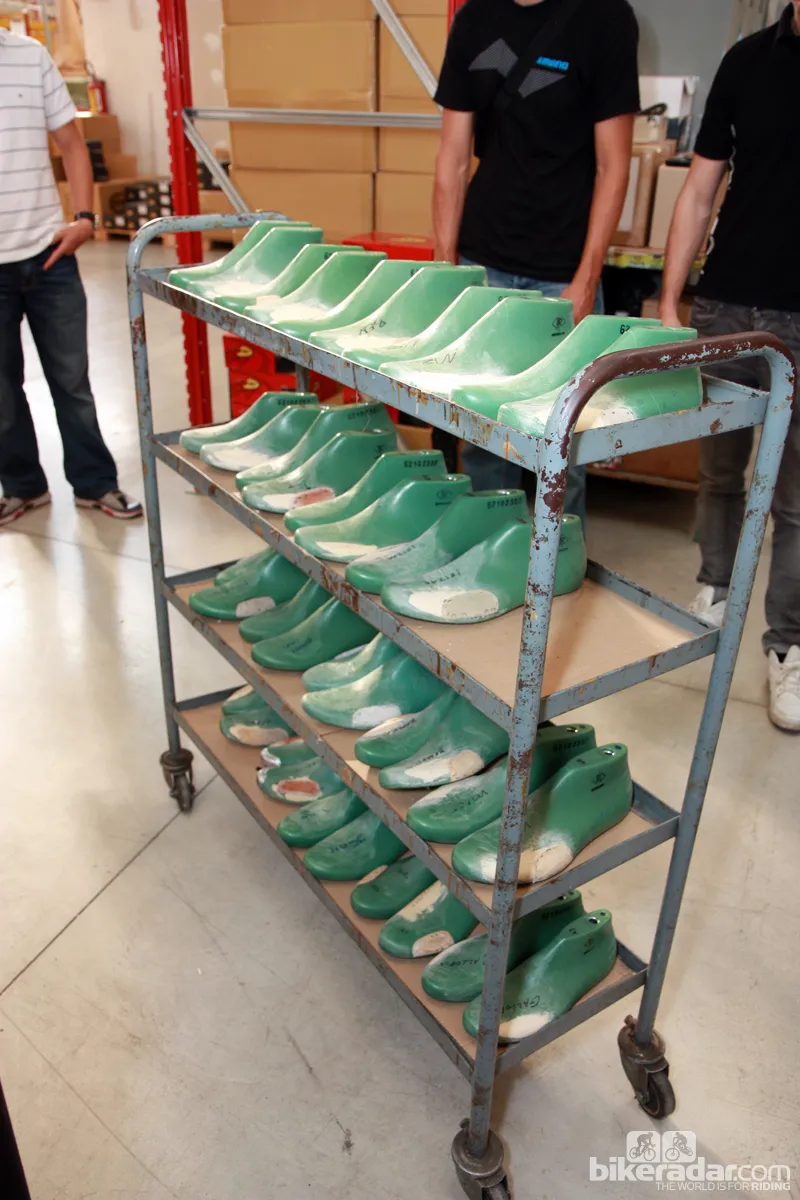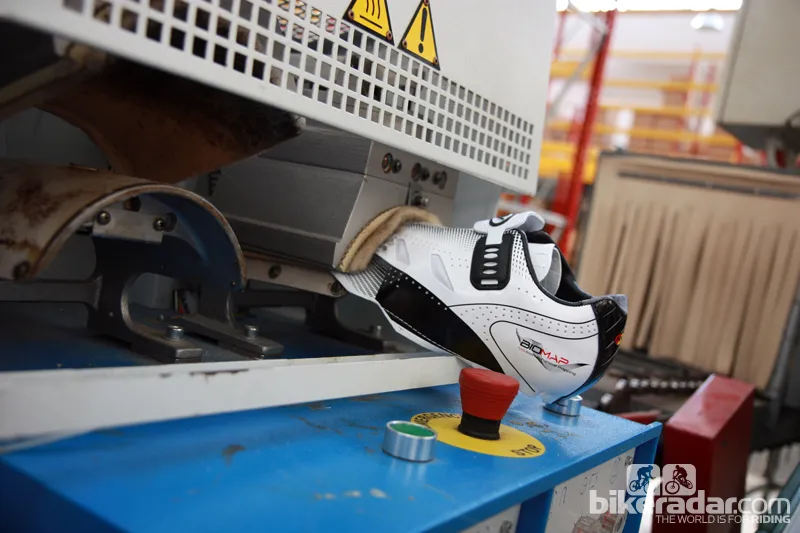It's no secret that Northwave no longer manufacture consumer shoes at their headquarters in Treviso, Italy. But that doesn't mean no shoes are still made there. We paid a visit to the heralded Italian footwear company on our way to this year's Giro d'Italia.
These days, the Treviso facility is mostly a collection of sales, marketing, design and administrative offices, plus a giant warehouse of production shoes for distribution to the European market. However, Northwave still maintain a single assembly line plus a full workshop to handle prototype work, experimental projects and special shoes for sponsored athletes.
There are multiple racks of custom lasts on the production floor, with seemingly every member of the RadioShack-Nissan-Trek team getting special treatment to keep their feet happy day after day. Each set of lasts is marked with the rider's name and nominal size, all festooned with an assortment of tacked-on bits, filed-off edges, hand-shaped putty filler and other modifications.

This single rack catalogs the foot shapes of the entire RadioShack-Nissan-Trek team
In case you've ever wondered, Andy Schleck wears a size 45.5 and prefers an aggressive taper at the toes but more space at the base of his little toes. Chris Horner, on the other hand, wears a size 42 and likes a little extra breathing room around the ball and opposite side.
What about Andre Greipel (Lotto-Belisol)? He's a size 44 and, like Horner, favors a roomier fit up front. Fabian Cancellara shares Schleck's numerical size but his shoes are narrower from the middle up.
Custom options aren't just limited to fit, either. Because Northwave's on-site technicians aren't constrained by production specs, they can also mix and match different uppers and lowers. If someone wants an off-road outsole with a triathlon-specific upper or a pair of walkable podium shoes, that's possible.
Supporting this work is a small group of craftspeople who still build shoes the old way. They use scissors, grinding wheels, glue and a small army of old machines that look as though they were dreamed up by a sci-fi set designer.
That said, there's an interesting juxtaposition of old and new throughout the building. Current shoes are built with carbon composites and synthetic microfiber materials covered with bright neon graphics, while the paint on the machines used to form them is worn down to the metal from years of hands-on work. Custom uppers are constructed by one person in a small room, armed with a pair of scissors and a whirring sewing machine while the pattern pieces themselves are created with a computer-controlled leather cutting table.

Upper materials are heated first, to increase their pliability
There's a room filled with modern equipment for testing everything from shoe flex to zipper durability. But save for a few small areas, there's seemingly no air conditioning. Carbon fiber plates are molded overseas by giant machines, but the original shapes are cut by hand in Treviso out of foam and wood with blades and jeweler's files.
But that's enough chit chat. At this point, let's just let our image gallery and the behind-the-scenes video below do the rest of the talking.
Unable to load media